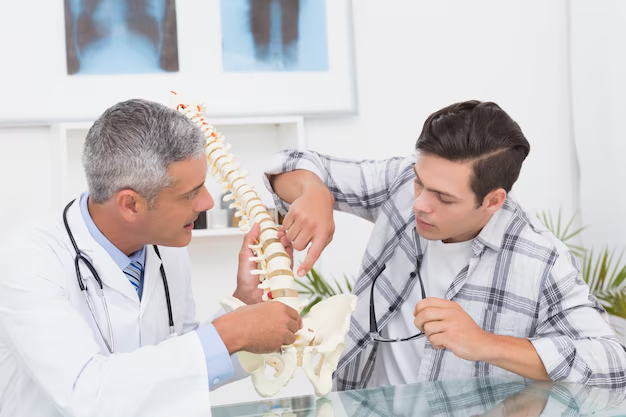Recognizing the Early Signs of Osteoporosis: What You Need to Know
Osteoporosis is often called the "silent disease" because it progresses without obvious symptoms until a fracture occurs. Understanding the warning signs of osteoporosis can empower individuals to seek early treatment and make lifestyle changes to strengthen their bones.
Subtle Symptoms to Watch For
Back Pain
Persistent and unexplained back pain might hint at a vertebral fracture. This type of fracture in the spine can lead to serious complications if left untreated.
Loss of Height
A noticeable reduction in height over time can occur due to compression fractures in the spine, another consequence of osteoporosis.
A Stooped Posture
A curved or stooped back, commonly referred to as "dowager's hump," is often a clear indication of advanced osteoporosis and spinal fractures.
Easily Broken Bones
Frequent or unexpected fractures, especially in the hip, wrist, or spine, with minimal trauma — like a minor fall or bump — may be a tell-tale sign of osteoporosis.
Recognizing Risk Factors
Understanding your risk factors can also alert you to the possibility of osteoporosis:
- Gender and Age: Women, particularly those post-menopause, are at a higher risk. Older adults, in general, should be vigilant.
- Family History: A family history of osteoporosis or fractures adds to your likelihood of developing the disease.
- Body Frame: Individuals with smaller, thinner frames often have less bone mass to begin with, increasing their risk.
- Lifestyle Choices: Smoking, excessive alcohol consumption, and a sedentary lifestyle can all contribute to bone density loss.
Steps to Counteract Risk
Acting quickly if you identify any of these signs or risk factors is essential. Consulting with a healthcare professional can lead to preventive measures and treatments like bone density tests, medications, and lifestyle alterations such as diet and exercise improvements.
From Health Concerns to Financial Solutions
Bone health isn't just a personal concern; it has broader implications, including financial stress from medical bills following fractures or surgeries. However, there are programs and resources that can provide financial relief and aid:
🔍 Key Options for Support:
Medicare and Medicaid: These programs often offer coverage for bone density tests and treatments.
State Health Assistance: Many states offer supplemental health assistance programs for eligible residents.
Supplemental Security Income (SSI): Provides financial assistance to older adults and those with disabilities which can help cover medical expenses.
Scholarships and Grants: Educational grants for continued professional development in fields related to healthcare can be a tool for those looking to advance in osteoporosis research and education.
Community Clinics and Support: Non-profits and local community clinics sometimes offer free screenings and affordable services.
Identifying and understanding the warning signs of osteoporosis is the first step toward prevention and maintaining a high quality of life. At the same time, leveraging available financial and educational resources can ease the financial burden and enhance your overall well-being. Taking a proactive approach to both health and financial planning ensures you remain well-prepared for the future.

Related Topics
- a Nurse Is Caring For a Client Who Has Osteoporosis.
- a Percutaneous Is Performed To Treat Osteoporosis Related Compression Fractures
- Can Alcohol Cause Osteoporosis
- Can I Do Pilates If I Have Osteoporosis
- Can I Reverse Osteoporosis
- Can Men Get Osteoporosis
- Can Osteoporosis Affect Teeth
- Can Osteoporosis Be Cured
- Can Osteoporosis Be Painful
- Can Osteoporosis Be Reversed